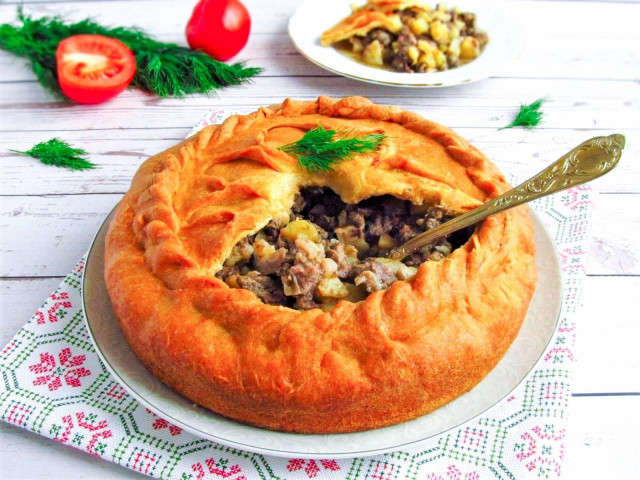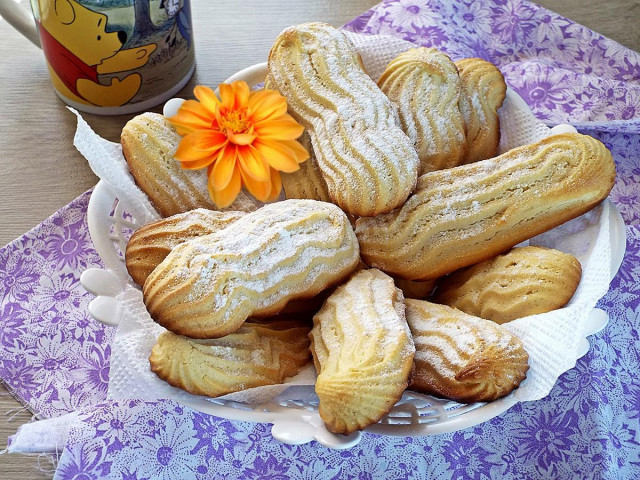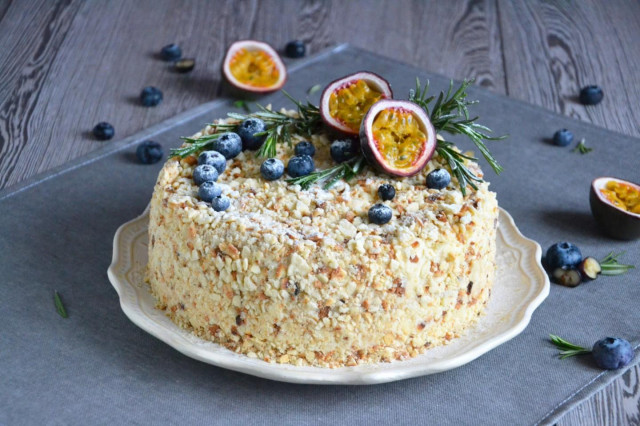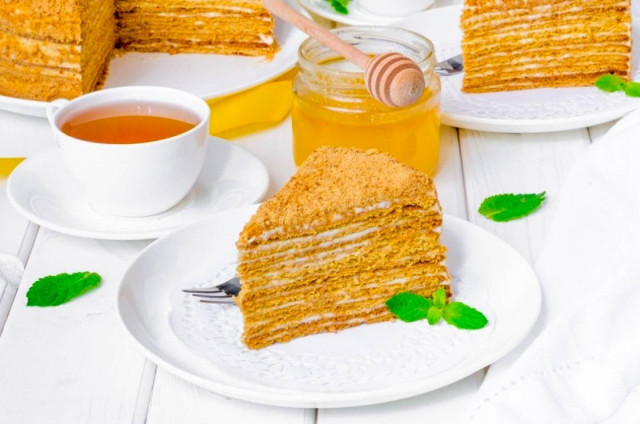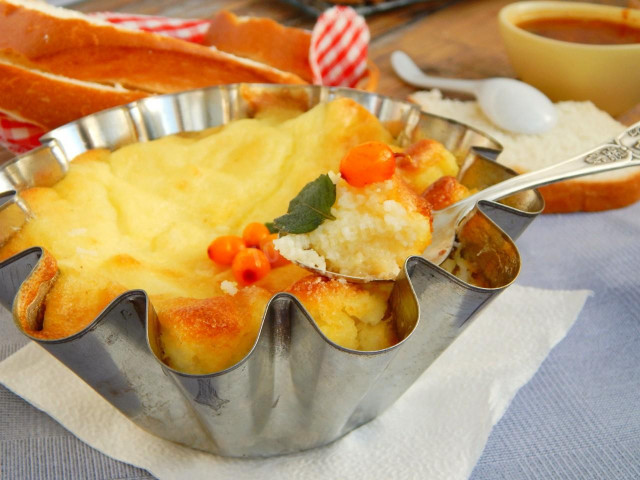Composition / ingredients
Step-by-step cooking
Step 1:
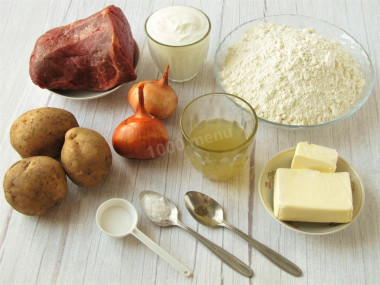
How to make Zur Balish — Tatar pie? Prepare the necessary ingredients. Beef is better to take the tenderloin or neck part, they are softer. I have veal fillet. Sour cream is suitable for any fat content. Butter choose the highest quality, natural, corresponding to GOST.
Step 2:
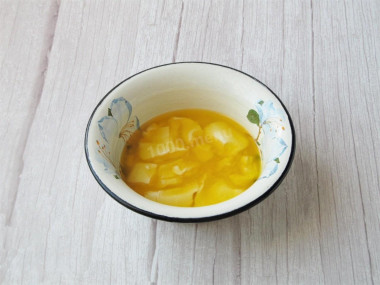
First of all, prepare the dough. How to make dough? Melt the butter in any way convenient for you, I heated it over low heat. Then let it cool down a bit.
Step 3:
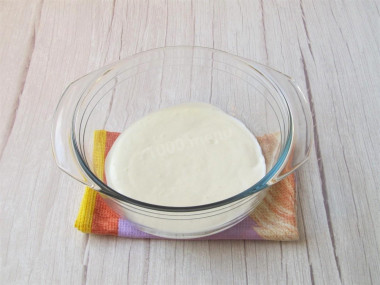
Add salt and soda to the sour cream. Stir and let stand for 10 minutes so that the acid contained in the sour cream extinguishes the soda.
Step 4:
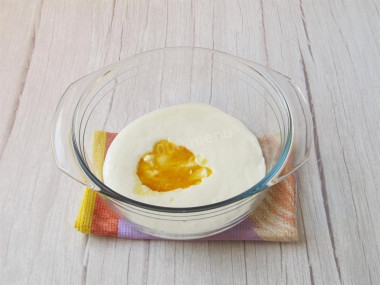
Add the cooled butter to the sour cream, mix.
Step 5:
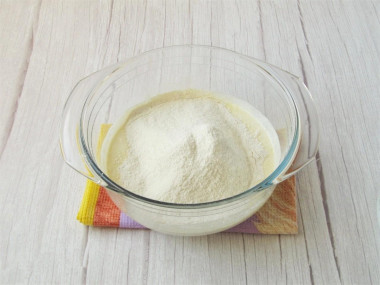
Pour in most of the sifted flour, mix. Add the rest of the flour in small portions, kneading the dough. Be prepared for the fact that flour may need more or less than indicated in the recipe. Focus not on the amount of flour, but on the desired consistency of the dough.
Step 6:
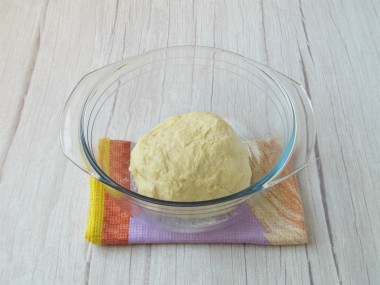
The dough should be soft, homogeneous, oily to the touch, not too thick. Therefore, the remaining flour should be poured carefully so as not to clog the dough. Wrap the finished dough in plastic wrap and put it in the refrigerator for half an hour.
Step 7:
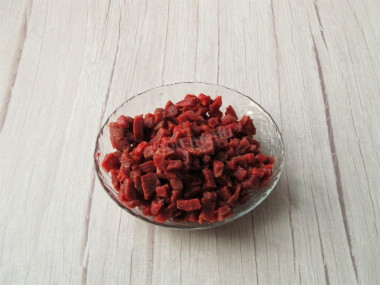
Prepare the filling. How to make the filling? Wash the meat, dry it, cut into small cubes about 1 * 1 cm in size.
Step 8:
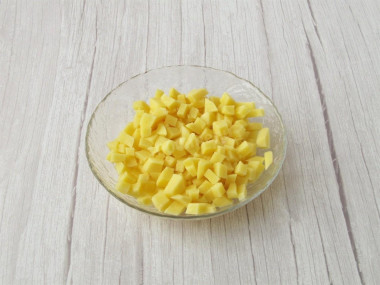
Peel the potatoes, wash them, cut them into the same cubes as the meat.
Step 9:
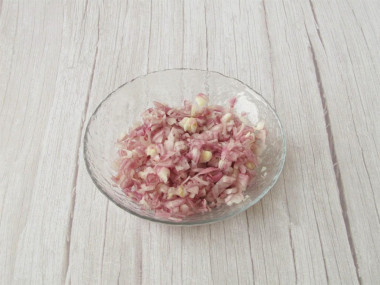
Peel the onion, wash it, chop it finely. There should be a lot of onions, it will give the filling juiciness.
Step 10:
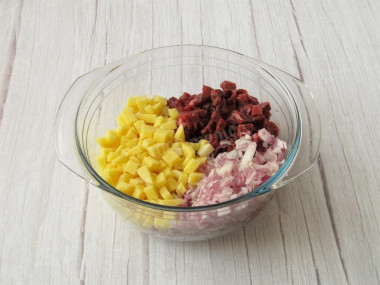
Combine meat with vegetables, add salt. Add ground black pepper, mix.
Step 11:
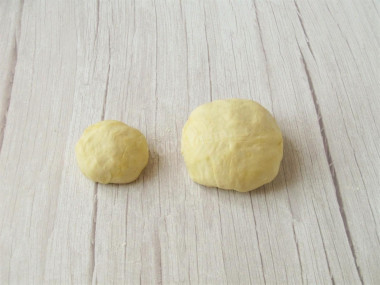
Mix the cooled dough a little more, separate about a fifth of it from it.
Step 12:
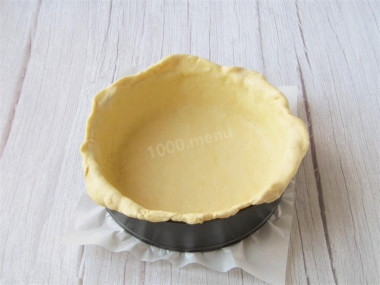
Roll out most of the dough into a round layer 6-7 mm thick so that the edges of the dough go over the sides of the mold. Grease the baking dish with butter, use a rolling pin to transfer the dough into the mold. Spread the dough along the contour of the mold (I have d =22 cm).
Step 13:
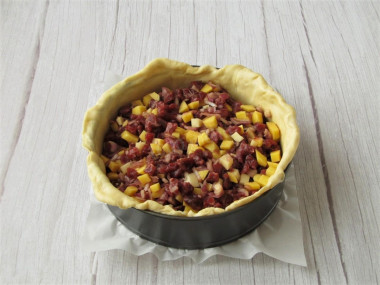
Put the filling on the dough.
Step 14:
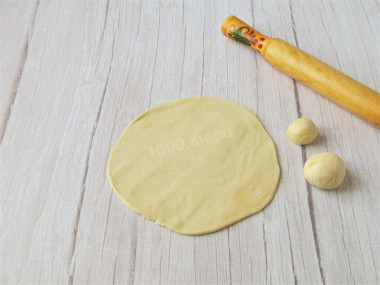
Divide the remaining dough into 3 unequal parts. From one, the smallest part, roll a ball, it will close the hole on the pie. The other part, the largest, roll out a size slightly smaller than the diameter of the mold.
Step 15:
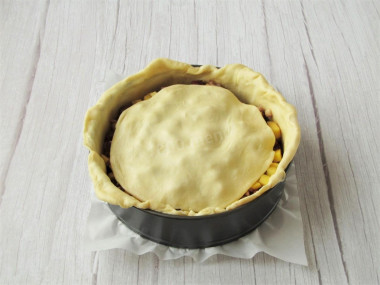
Put the rolled layer on the filling.
Step 16:
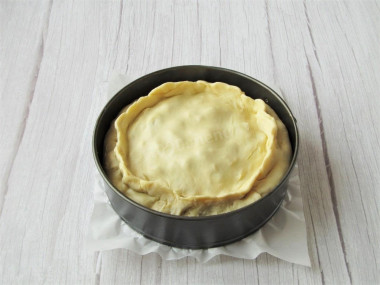
Connect the edges of the dough from the mold with the lid layer, pinch them well.
Step 17:
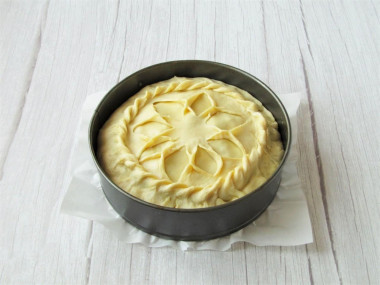
The rest of the dough will be used to decorate the cake. Roll it out as well, make incisions from the center to the edges, without cutting to the end. Put the dough on top, connect the edges with the edges of the pie, pinch well. Connect the cut holes together in the middle to make a pattern. But you can decorate the pie according to your desire and taste.
Step 18:
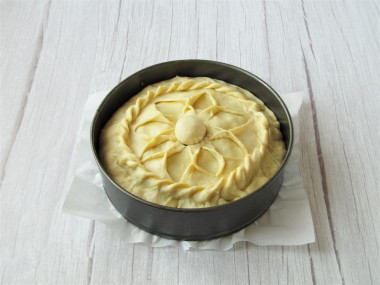
In the center of the pie, make a hole for steam to escape, as well as for adding broth. Close it with a ball of dough. Put the pie in a preheated 180 degree oven for 1.5 hours. When the pie is noticeably browned, cover the top with foil.
Step 19:
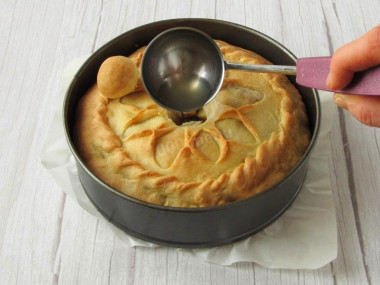
After 1.5 hours, remove the pie from the oven, pour the warm broth through the hole, cover with a ball of dough and continue baking for another hour. The readiness of the filling can be checked by tasting a piece of meat.
Step 20:
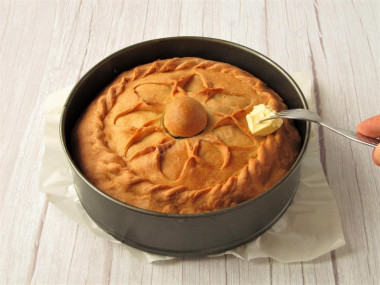
Brush the finished cake with butter on top. Without removing it from the mold, cover the pie with a thick towel, wrap it up and let it stand for another 20 minutes. Serve Zur Balish hot. Enjoy your meal!
The pie is opened by cutting off the top part. The filling is laid out in a plate along with the broth and eaten with pieces of crispy top crust. But the most delicious thing is the bottom part of the pie, soaked with the juiciness of the filling.
The filling for Zur Balish is also prepared with duck or goose meat. You can combine, for example, beef and goose.
Broth can be replaced with hot water, especially if the meat is fat enough.
The dough for such a pie is very successful. I liked that despite the long baking, it did not dry out and remained soft.
Zur Belish can be a full-fledged hearty lunch or dinner. You can supplement it with fresh vegetables and herbs.
It is important to sift the flour to saturate it with oxygen. Then the baking will turn out to be airy and will rise well when baking.
Butter can be melted in the microwave or in a water bath.
How to melt butter in the microwave?
Cut the butter into small pieces and place it in a special container. To prevent the oil from splashing when heated, cover the oil vessel with a paper towel. The oil should be melted either at the lowest power or in defrosting mode. At first, five seconds will be enough. Next, if the butter has not melted yet, set it again for 5 seconds and start the microwave. Repeat the process several times until the desired result.
How to melt butter in a water bath?
You will need two containers of different diameters. Pour water into a large one and put it on the stove. Place the smaller container on top so that it is submerged in water by about half. Put the sliced butter into it. Under the influence of boiling water, the oil will begin to melt. Stir the oil slightly to speed up the process. As soon as the pieces of oil are completely dissolved, remove the container from the stove.
Is it possible to replace baking powder with soda, how to add them correctly so that the baking is lush, how to avoid an unpleasant soda taste and much more, read the article "Baking powder or baking soda - which is better?"
Calorie content of the products possible in the dish
- Ripe potatoes - 80 kcal/100g
- Baked potatoes - 70 kcal/100g
- Mashed potatoes - 380 kcal/100g
- Boiled potatoes - 82 kcal/100g
- Potatoes in uniform - 74 kcal/100g
- Fried potatoes - 192 kcal/100g
- Melted beef fat - 871 kcal/100g
- Fat beef - 171 kcal/100g
- Lean beef - 158 kcal/100g
- Beef brisket - 217 kcal/100g
- Beef - okovalok - 380 kcal/100g
- Beef - lean roast - 200 kcal/100g
- Beef shoulder - 137 kcal/100g
- Beef - ribs - 233 kcal/100g
- Beef - ham - 104 kcal/100g
- Beef - tail - 184 kcal/100g
- Boiled ham - 269 kcal/100g
- Beef corned beef - 216 kcal/100g
- Sour cream with 30% fat content - 340 kcal/100g
- Sour cream of 25% fat content - 284 kcal/100g
- Sour cream with 20 % fat content - 210 kcal/100g
- Sour cream of 10% fat content - 115 kcal/100g
- Sour cream - 210 kcal/100g
- Ground black pepper - 255 kcal/100g
- Butter 82% - 734 kcal/100g
- Amateur unsalted butter - 709 kcal/100g
- Unsalted peasant butter - 661 kcal/100g
- Peasant salted butter - 652 kcal/100g
- Melted butter - 869 kcal/100g
- Salt - 0 kcal/100g
- Onion - 41 kcal/100g
- Wheat flour - 325 kcal/100g
- Baking soda - 0 kcal/100g
- Meat broth - 34 kcal/100g

